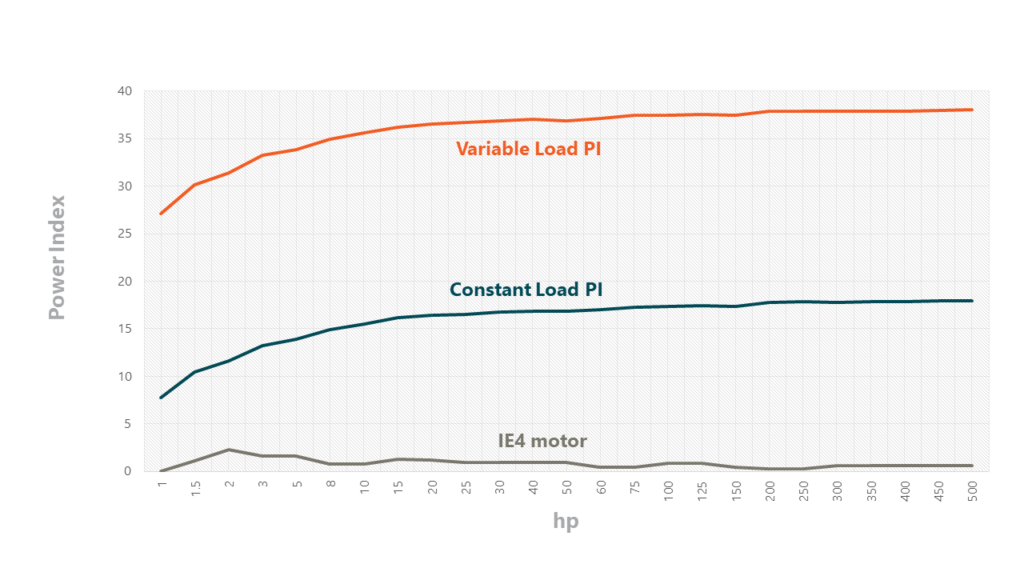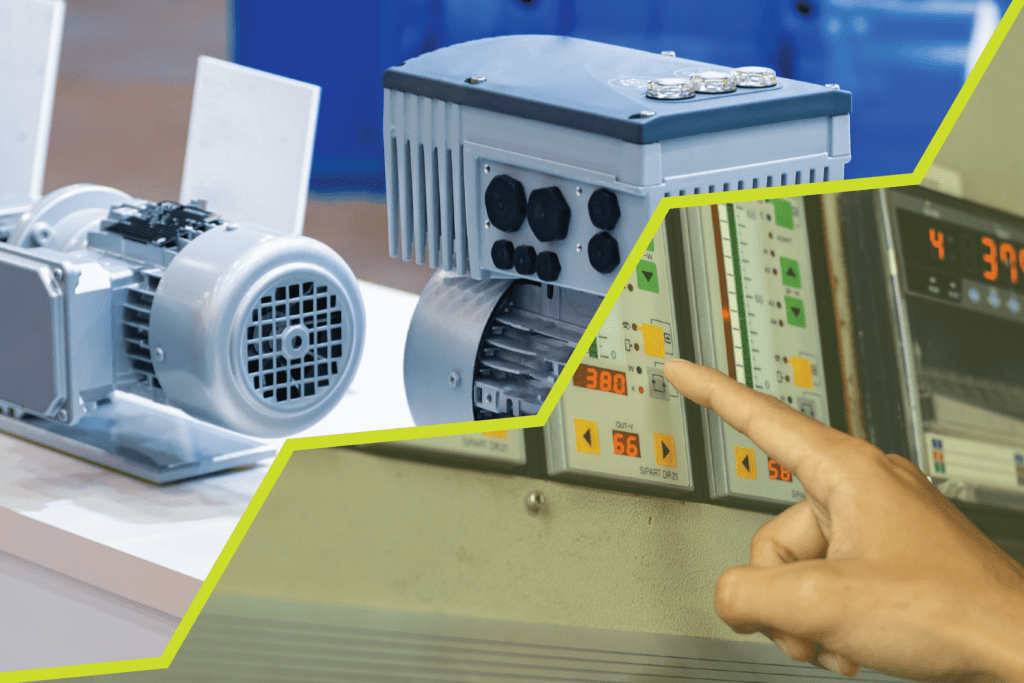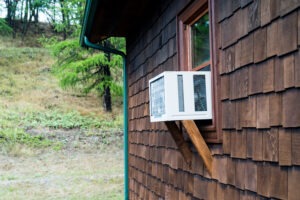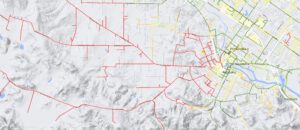Cadeo has led multiple research efforts to quantify energy savings from electrical drives, characterize the electrical drive market, and define new metrics for motor-driven systems with and without electrical drives. This work has cumulated in a deep understanding of the energy savings and nonenergy benefits of electrical drives and can unlock new market transformation opportunities.
Electric drives are devices used to control the output of a motor. They’re essential energy efficiency tools with dramatic benefits. Over the past several years, Cadeo has been advancing electrical drives savings opportunities across several fronts.
Challenging Conventional Wisdom
Electrical drives have been around since the 1970s and have been a long-standing opportunity for energy savings. This is because they can decrease a motor’s overall energy consumption by matching the operation of the motor to the needs of the system. The drive operates by slowing the rotating speed of the motor, allowing the motor to serve part loads more efficiently. Historically, drives have applied to variable load applications (things like heating and cooling systems) rather than constant load applications (where the motor tends to operate a single load point most of the time), where it’s thought they’ll be most effective.
A Modern Approach
In 2020, Cadeo, in partnership with the Northwest Energy Efficiency Alliance (NEEA) and National Electronic Manufacturer’s Association (NEMA), investigated this long-standing concept. We leveraged data on pumps in the Pacific Northwest to quantify the energy savings potential of installing drives across a variety of applications—including both variable and constant load applications. To do this, Cadeo leveraged detailed data on over 400 pumps in the Pacific Northwest[1] collected in partnership with NEEA. This publicly-available data set includes information on pump characteristics, such as pump efficiency, application, size, operational information, and whether the pump was equipped with a drive. Cadeo calculated the potential energy savings from installing a drive on every pump in the data set with sufficient operating information.
Energy Savings
Our research found that there was, on average, 23% savings in constant load pump applications. This is lower than the 42% average savings found in variable load pump applications, but much higher than previously expected. Cadeo’s research showed that motors are often oversized. Furthermore, specified duty points (or design points) are often greater than the actual operating conditions experienced in the field. This is due to safety factors and rules of thumb implemented at the design stage. Intentionally oversized design points due to anticipated future increases in demand are another factor. The ability for electrical drives to “right-size” constant load equipment led to significant energy savings. Savings that far exceeded the conversion efficiency losses from the electrical drive itself. This research justifies the adoption of electrical drives on constant load, variable torque applications.
Nonenergy Benefits
We also outlined the nonenergy benefits from electric drives. This includes process improvements, process visibility and control, reduced maintenance, and power quality improvement. These nonenergy benefits often outweigh the energy savings and help justify drive installation cost in applications with lower direct energy savings. In one example at a coal facility, a motor equipped with a drive (or power drive system [PDS]) was added to increase or decrease the speed of a conveyor belt to match the demand from the crusher. This upgrade resulted in approximately 10% energy savings relative to the previous constant speed motor without a drive, which would traditionally operate intermittently because the conveyor and crusher were oversized. However, the PDS also yielded a 60% reduction in energy cost due to the ability to adjust operation timing to optimize for schedule-based pricing.[2]
Good to Know
Electrical drives are devices used to control a motor’s output/speed by modifying the voltage and/or frequency of the electricity supplied to the motor. They reduce energy consumption of motor driven systems when those systems operate below maximum capacity.
The amount of energy a drive will save when applied to a motor-driven system depends on the application. These are divided into three different categories:
- Variable torque: centrifugal pumps, fans, and compressors. These have the most savings and follow the affinity laws.
- Constant torque: conveyor belts, positive displacement pumps, and reciprocating compressors. These have medium energy saving potential and reduce power linearly with speed.
- Constant horsepower: winding machines (wire winding or paper-drum loading) and milling machines. These applications do not present significant energy savings opportunities. However, they do represent cost reductions due to enhanced process visibility and control or other non-energy benefits can be significant.
Setting the Metrics
In addition to our research on electrical drive application, we also reevaluated how the industry measures motor-driven system efficiency. Currently, the energy performance of motors and drives is described based on the full-load efficiency. But the electric motor and the electric drive represent a system, and the interaction between these components is what leads to energy-saving improvements, not the individual component efficiencies acting alone. So Cadeo, along with our project partners at NEEA and NEMA, worked to develop a new metric: the Power Index (PI).
The Power Index
PI describes the expected power savings from PDS compared to a typical, constant speed, standard efficiency motor. It considers the efficiency of the motor, the efficiency of the electrical drive, and the potential power reduction of the system in a typical “constant load” or “variable” load system. PI describes to end users, specifiers, and the industry the expected energy savings from a PDS over a baseline constant speed motor. While savings in specific applications may vary, the ratings offer a conservative, comparable, and standardized estimate of potential savings. This estimate comes without the need for detailed calculations or site-specific information.
We hope that the use of this metric can help the market understand and appreciate the potential benefit of drives compared to more efficient motors. For example, the figure below compares the energy savings associated with increasing the efficiency of an electric motor (gray line) to the energy savings associated with installing an electrical drive in either a constant load (blue line) or variable load (orange line) application. The drive provides 10-40% savings, depending on the size of the equipment and application, where the more efficient motor achieves only 1-2% savings.

Spreading the Word
We’re really excited about these findings. The potential for energy savings and process improvement opportunities from drives is becoming a reality. Right now, we’re working to spread the word on these new findings. We’ve published an ACEEE paper on the topic; recently presented at the Energy Efficiency in Motor Driven Systems (EEMODs) Conference in Stuttgart, Germany; and discussed the findings with the U.S. Department of Energy’s Industrial Assessment Centers. Feel free to reach out for more information.
Driving into the Future
There’s still a great deal to understand about the energy savings and nonenergy benefits associated with electrical drives. We’re currently leading a major market characterization study with the Bonneville Power Administration that will define the market size, total energy consumption, and energy savings associated with electrical drives installed on industrial pumps and fans in the Pacific Northwest. Through this work, we hope to uncover new opportunities for electrical drive savings in Pacific Northwest. Additionally, we would like to discover new areas for programs to target.
We’re continuing to work with industry, utilities, and energy efficiency organizations to encourage the adoption of drives. This transition will reduce energy consumption, improve process efficiencies, and provide important grid flexibility benefits. Key goals include developing simplified rebate programs for drives, developing better quantification methods for non-energy benefits from drives, exploring the potential of drives to provide grid flexibility and resiliency benefits, and increasing market awareness and demand for these powerful devices.
Learn more:
[1] NEEA (Northwest Energy Efficiency Alliance), “Extended Motor Products Savings Validation Research on Clean Water Pumps and Circulators,” NEEA.org, June 30, 2022, https://neea.org/resources/extended-motor-products-savings-validation-research-on-clean-water-pumps-and-circulators.
[2] S. Zhang and W. Mao, “Energy Efficiency Optimization of Coal Conveying Systems with Consideration of Crushers,” Energy Procedia, 3253–3261.







